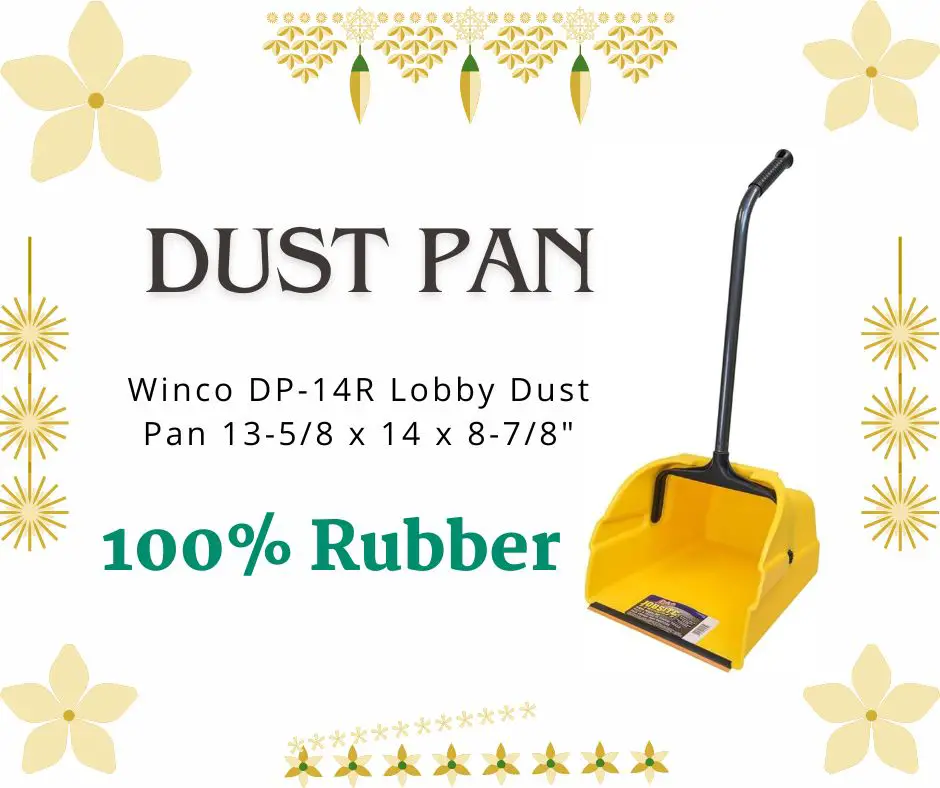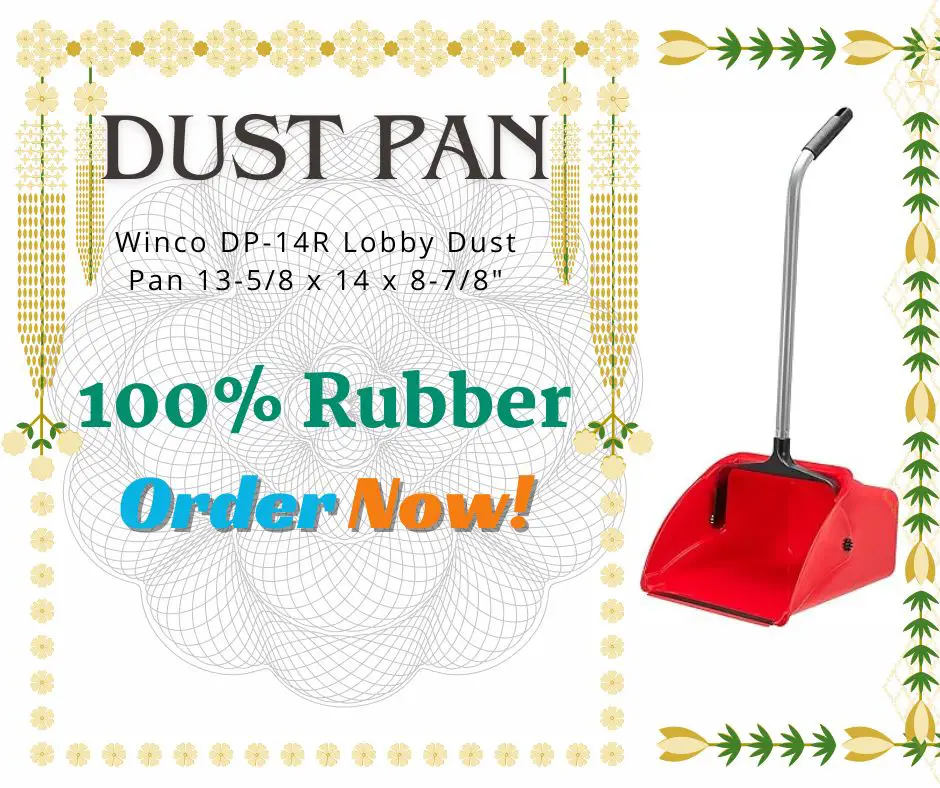In the realm of household cleaning, the dust pan stands as an essential tool, often overlooked but fundamentally crucial in maintaining a tidy living space. While its design may seem straightforward, achieving optimal results requires a finesse born of understanding and technique. In this comprehensive guide, we delve deep into the intricacies of dust bin usage, unveiling expert tips and tricks to elevate your cleaning prowess.
Understanding the Anatomy of a Dust Pan
Before delving into advanced techniques, it’s imperative to comprehend the basic components of a dust pan. Typically comprised of a flat, scooped surface attached to a handle, dust bins come in various materials such as plastic, metal, or even rubber. The key lies in selecting a durable material that facilitates efficient debris collection without scratching or damaging surfaces.
Choosing the Right Dust Pan for Your Needs
Selecting the appropriate dust pan for your specific cleaning requirements can significantly impact efficiency and results. Consider factors such as size, material, and design features. For instance, larger dust pans are ideal for sweeping larger areas, while smaller ones offer increased precision for confined spaces. Additionally, opt for dust bins with rubber edges to ensure optimal contact with the floor, preventing debris from escaping.
Mastering Proper Dust Pan Technique
Achieving pristine cleanliness hinges on mastering proper dust pan technique. Begin by sweeping debris into neat piles using a high-quality broom, ensuring thorough coverage of the targeted area. Next, gently guide the dust bin towards the debris, positioning it at a slight angle to facilitate seamless collection. Employ a smooth, controlled motion to scoop the debris into the pan, avoiding abrupt movements that may cause spillage.
Overcoming Common Dust Pan Challenges
Despite its simplicity, dust pan usage can present several challenges that hinder optimal cleaning efficiency. One common issue is the accumulation of static electricity, causing fine particles to cling stubbornly to the pan’s surface. To counteract this, lightly dampen the dust pan before use or consider investing in an anti-static dust bin for enhanced performance.
Advanced Dust Pan Techniques for Superior Results
Elevate your cleaning game with advanced dust pan techniques designed to tackle even the most stubborn debris. For instance, employing a back-and-forth sweeping motion can dislodge embedded dirt, allowing for more effective collection. Additionally, experiment with different angles and positioning to maximize debris capture, especially in hard-to-reach corners and crevices.
Elevate your cleaning game with advanced dust bin techniques designed to tackle even the most stubborn debris. For instance, employing a back-and-forth sweeping motion can dislodge embedded dirt, allowing for more effective collection. Additionally, experiment with different angles and positioning to maximize debris capture, especially in hard-to-reach corners and crevices.
Maintaining and Caring for Your Dust Pan
To prolong the lifespan and effectiveness of your dust pan, proper maintenance is essential. After each use, thoroughly rinse the pan with water to remove any lingering debris and grime. Avoid using harsh chemicals or abrasive scrubbers, as they may damage the pan’s surface. Finally, store the dust bin in a dry, well-ventilated area to prevent mold or mildew growth.
In conclusion, mastering the art of efficient dust pan usage is essential for achieving pristine cleanliness and maintaining a tidy living environment. By understanding the anatomy of a dust pan, choosing the right tool for your needs, and employing proper technique, you can elevate your cleaning prowess to new heights. Remember to overcome common challenges, experiment with advanced techniques, and prioritize proper maintenance to ensure optimal performance and longevity of your dust bin.

FAQ
How often should I empty my dust bin?
The frequency of emptying your dust bin depends on how quickly it fills up and the type of waste you dispose of. As a rule of thumb, it’s advisable to empty it before it becomes overly full to prevent unpleasant odors and spills.
Can I use my dust bin for both dry and wet waste?
While some dust bins are designed to accommodate both dry and wet waste, it’s recommended to separate them for better waste management and hygiene. Consider using separate bins or liners for dry and wet waste to make disposal and recycling easier.
What’s the best way to clean a dust bin?
Cleaning your dust bin regularly is essential to prevent odors and bacterial growth. You can use a mixture of water and mild detergent to clean the bin thoroughly, then rinse it with water and let it dry completely before using it again.
Are there any eco-friendly alternatives to traditional plastic dust bins?
Yes, there are eco-friendly alternatives such as bins made from recycled materials like bamboo, metal, or biodegradable plastics. These options help reduce environmental impact and promote sustainability.
How can I prevent pests like flies and ants from getting into my dust bin?
To prevent pests, make sure your dust bin has a tight-fitting lid and is kept closed when not in use. Additionally, regularly cleaning the bin and avoiding disposing of food waste directly into it can help deter pests.
Can I recycle my old dust bin?
Depending on the material, some dust bins can be recycled. Check with your local recycling center to see if they accept bins for recycling. Alternatively, you can repurpose old bins for storage or other purposes.
What should I do if my dust bin gets damaged?
If your dust bin is damaged, you can consider repairing it if the damage is minor. Otherwise, it may be time to replace it. Look for durable bins made from quality materials to ensure longevity.
Are there any special considerations for outdoor dust bins?
Outdoor dust bins may require additional features such as weatherproofing and sturdy construction to withstand outdoor conditions. Consider bins with secure lids to prevent wildlife from accessing them and causing messes.
How can I reduce the amount of waste going into my dust bin?
To reduce waste, consider practicing waste reduction techniques such as composting organic waste, recycling materials whenever possible, and purchasing products with minimal packaging. Additionally, opting for reusable items instead of disposable ones can help decrease the amount of waste generated.
Related More Topic
How a Wrongful Death Attorney Can Help You Seek Justice for Your Loved One
The benefits of hiring a boat accident attorney for your case

